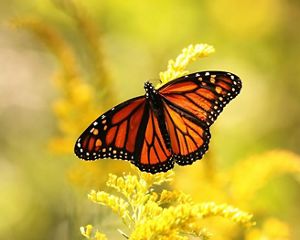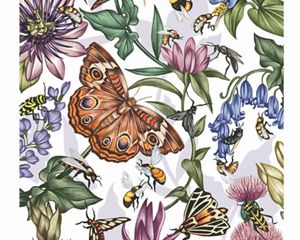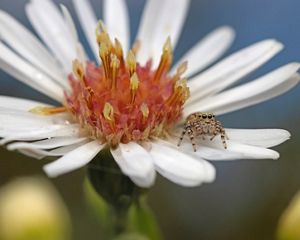
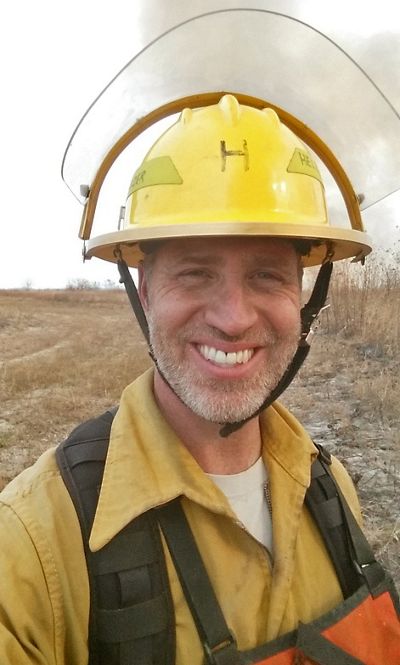
Who can forget that awkward moment when your mom or dad sat you down to have a talk about the birds and the bees? Beyond helping anxious parents explain where babies come from, birds, bees and other pollinators play another key role in the cycle of life.
No one knows this better than Chris Helzer, TNC’s director of science for Nebraska.
“Pollinators move pollen from the male parts of flowers to female parts of flowers, thereby completing the fertilization process so fruits and seeds can be formed,” he said. “Basically, they are facilitating plant sex.”
Pollinators join many other animals that help plants with transportation needs. For example, many plants rely on animals to disperse their seeds by carrying them on their fur or in their stomachs. However, pollination is a necessary first step that comes before seed dispersal.
“Those seeds wouldn’t exist without the pollinators who facilitate fertilization,” Chris said.
Pollinators and Biodiversity
Pollinators, which include hummingbirds, bees, butterflies and moths, along with many wasps, flies and beetles, play an incredibly important role for both people and nature.
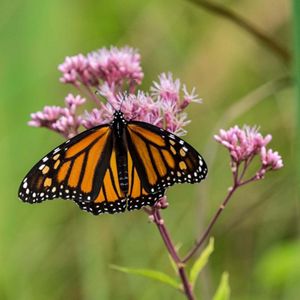




Monarch Butterfly: We can all help this iconic butterfly by planting common, showy, butterfly, swamp and other native milkweed species in our gardens. © Charles Larry

American Bumblebee: Bumblebees are excellent pollinators. Their furry coats easily pick up pollen, they move fast and are around from early spring into fall. © Chris Helzer/TNC

Ruby-throated Hummingbird: Plant red, orange and purple tubular flowers such as columbine, cardinal flower and wild bergamot to attract the lovely ruby-throated hummingbird. © Kent Mason

Spring Azure: The spring azure lays its eggs on the flower buds of a variety of woody shrubs, including dogwoods and New Jersey tea, as well as on lupine and sunflowers. © Bob in swamp/Foter
“Pollinators help plants create the fruits and seeds that power ecosystems,” Helzer says.
“Those fruits and seeds are critical food sources for animals, and they also allow plant species to survive and reproduce. That enables diverse plant communities, which are a key to the survival and resilience of entire ecosystems. If plants aren’t producing seeds and replacing themselves over time, plant diversity will go down.”
Peculiar Pollinators in the Midwest
Bees & butterflies aren’t the only pollinators in town. Meet the underdogs of pollination.
Get to know themFor Helzer, who spends much of his time with Midwestern flora and fauna, pollinators have a special draw.
“One of the things that interests me about pollinators is the number of complex and really cool relationships that have evolved between flowering plants and their pollinators,” he says. “Flower shapes, color and other design features are sometimes extremely specialized and complicated, just so they can control the kinds of insects that have access to their pollen and nectar.
“On their side, pollinators evolve specialized equipment, too—long or short tongues, certain body sizes or shapes to help them get into flowers or reach nectar from the outside, and so on. The biggest reason I’m interested in pollinators, though, is that they react to some of the most important attributes that make healthy ecosystems. Because of that, they are great indicators of whether or not a natural system is functioning well.”

Stay connected for the latest news from nature.
Get global conservation stories, news and local opportunities near you. Check out a sample Nature News email
The Plight of the Pollinator
Unfortunately, today myriad species of pollinators are facing serious threats—not just the honey bees we so often hear about in the news. While different factors contribute to population declines, the primary one we should focus on is the loss, fragmentation and degradation of habitat, Helzer says.
“When pollinators can find large, connected and florally-diverse habitats and aren’t exposed to pesticides, they are better able to cope with disease and other stressors. When habitat is broken up into little pieces, pollinators have fewer resources available to them; they are found in smaller, more vulnerable populations; and they are exposed to all the risks of pesticides and other human-caused threats coming in from the edges of those habitats."
“Restoring large blocks of habitat with good plant diversity will go a long way toward fixing the big problems,” he adds.
Protecting large-scale habitats for pollinators and other species is exactly the kind of work TNC is doing across the country and the world. Learn more about the places we protect across the Midwest by checking out the map below.
Explore TNC Preserves to See Pollinators
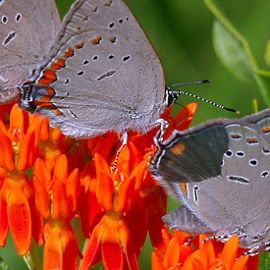
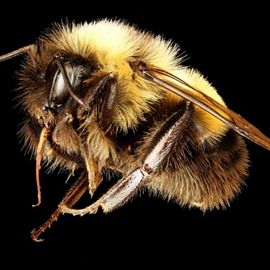
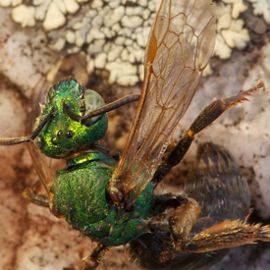
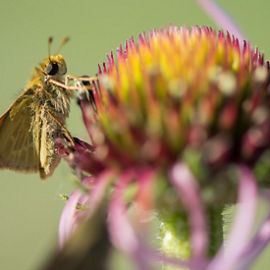
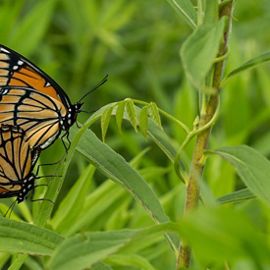
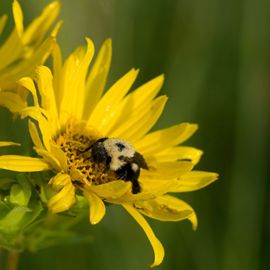
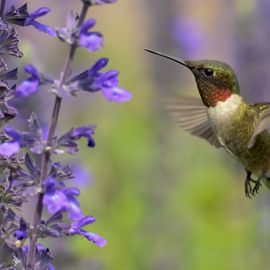
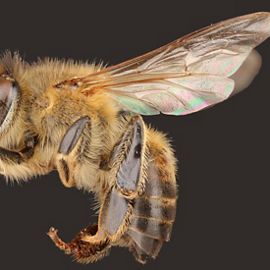
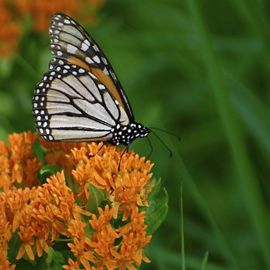
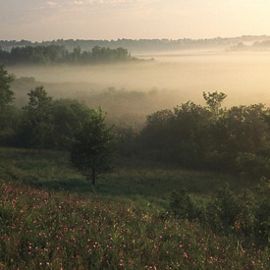
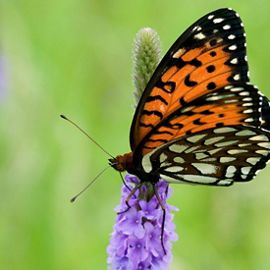
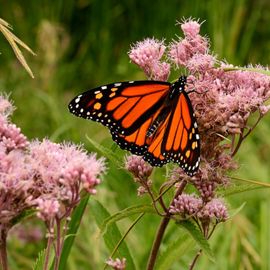

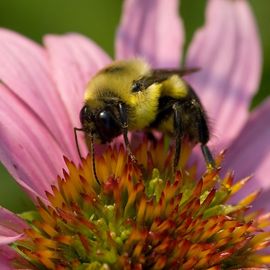
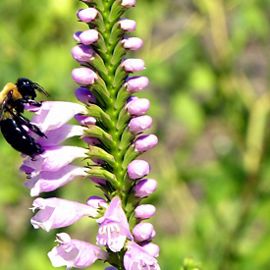
TNC Preserves with Pollinator Abundance TNC protects habitat that is crucial for pollinators throughout the Great Lakes region. Click on a green marker to learn more about the preserve.
Urban Pollinator Habitat?
Large habitats aren’t the only ones that matter for pollinators, Helzer says.
“What you do in your own yard or local garden makes a real difference. Providing a diversity of blooming wildflowers throughout the entire season can support pollinators—even in urban areas. It doesn’t replace the need for large blocks of habitat outside of cities, but making urban areas more supportive of at least some pollinator species is really valuable."
With that in mind, maybe it’s time to have a different kind of talk about the birds and the bees with your family—and changes you can make to help plants get busy and produce the seeds and fruits all life depends on.

Syrphid Fly
When you think about pollinators, you may not think about flies, but you should! Syrphid flies, also called hover flies, are the most diverse and common flower-visiting flies.

Soldier Beetle
These beetles are good to have around because they not only help pollinate goldenrod, milkweed and rattlesnake master, but also eat aphids and other garden pests.

Red Admiral
This butterfly really loves fermenting fruit. Got a plum or apple you forgot to eat that is starting to rot? Toss it in the garden and see what shows up!

Green Halictid Bee
Seventy percent of our native bees nest in the ground. This metallic green halictid bee, also known as a sweat bee, digs a little burrow in the ground for its young.
Bring Your Garden to Life with Pollinators
Nothing is more delightful in the spring than a garden in bloom! Except perhaps a garden with butterflies flitting about from blossom to blossom sipping nectar as they go. Not to mention their fascinating little caterpillars, each one awaiting its turn to “Spread your wings and prepare to fly, for you have become a butterfly,” as Mariah Carey sings.
While butterflies dine, they are also pollinating the plants, helping them produce the seeds that will become the next generation.
Want to attract butterflies, bees, birds and other pollinators to your garden? If you grow the plants they love, they will come.
We recommend plants that are native to your area because the caterpillars of some pollinators such as monarchs need to feed on specific plants like native milkweed. Native plants also require less water and do better in the soils and climate they’ve adapted to.
